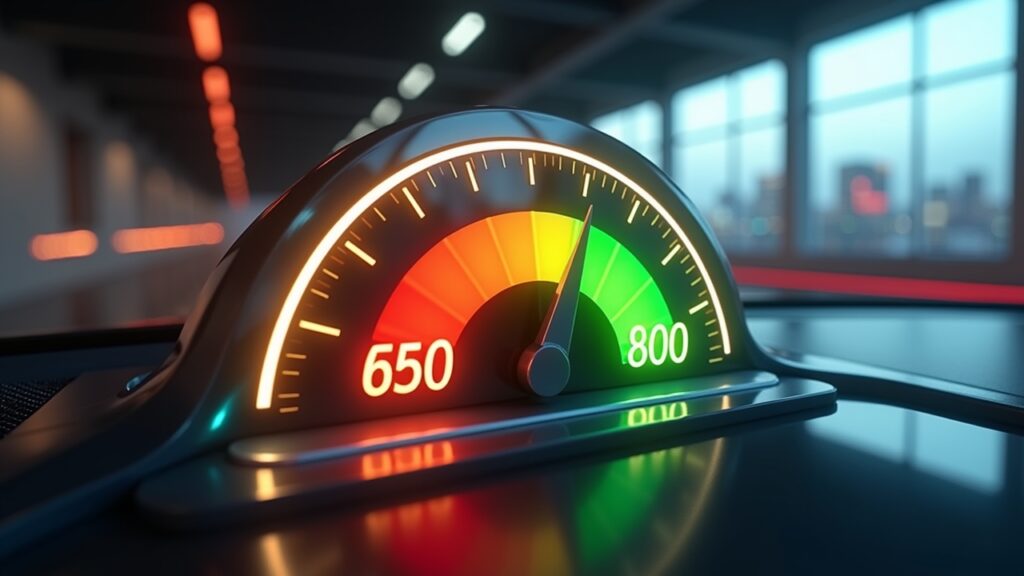Advertisements
I’ll never forget the day I checked my credit score and nearly spit out my coffee. It had dropped 40 points overnight! Turns out, I’d been using my credit card like it was going out of style.
Here’s a mind-blowing stat: your credit utilization ratio makes up a whopping 30% of your credit score. That’s almost a third of what lenders look at when deciding if you’re worthy of that dream car loan or mortgage!
Let me break down everything I’ve learned about this sneaky little ratio that can make or break your financial future. Trust me, once you get this stuff down, you’ll be managing your credit like a pro.
The Credit Utilization Ratio Explained (In Plain English)

So what exactly is this mysterious ratio? It’s basically how much credit you’re using compared to how much you have available.
Think of it like this – if you’ve got a credit card with a $1,000 limit and you’re carrying a $300 balance, your utilization is 30%. Simple math, right? I used to think having high limits meant I could spend more, but boy was that wrong.
The formula is super straightforward:
Credit Utilization = (Total Credit Card Balances ÷ Total Credit Limits) × 100
Most experts recommend keeping this number below 30%, though honestly, I’ve found the sweet spot is closer to 10%. My score jumped 25 points just by getting mine down from 45% to 15%!
How Different Utilization Percentages Impact Your Score
Let me paint you a picture of how these percentages actually affect your score. When I first started paying attention to this stuff, I was shocked.
- 0-9%: This is the golden zone. Your score will thank you!
- 10-29%: Still pretty good – you’re showing responsible usage
- 30-49%: Yellow alert! Your score starts taking hits here
- 50-74%: Danger zone – expect significant score drops
- 75%+: Code red! This screams “risky borrower” to lenders
I learned this the hard way when I maxed out a card for a vacation. My utilization shot up to 68% and my score tanked faster than you can say “credit report.”
Calculating Your Own Credit Utilization (With Real Examples)
Okay, time for some real talk about calculating this thing. I used to think it was complicated until I actually sat down and did it.
Here’s what I do every month: I grab all my credit card statements and add up the balances. Then I add up all my credit limits. Divide the first number by the second, multiply by 100, and boom – there’s your percentage.
Let me show you with my actual numbers from last year:
– Card 1: $500 balance, $3,000 limit
– Card 2: $200 balance, $2,000 limit
– Card 3: $0 balance, $1,500 limit
Total balances: $700. Total limits: $6,500.
Utilization: 10.8%
Pro tip: You can also check your utilization using free tools like Credit Karma or your credit card’s app. Most of ’em calculate it automatically these days.
Smart Strategies to Lower Your Utilization
Here’s where things get interesting. I’ve tried every trick in the book to keep my utilization low, and some work way better than others.
First up – pay before your statement closes! This was a game-changer for me. Credit card companies report your balance on the statement date, not after you pay.
Another sneaky trick? Ask for credit limit increases. I called up my oldest card and they bumped me from $3,000 to $5,000 just like that. Instant utilization drop without spending less!
Sometimes I’ll make multiple payments throughout the month too. If I know I’m gonna have high spending (hello, holiday shopping), I’ll pay off chunks as I go. Keeps that reported balance nice and low.
Oh, and here’s something counterintuitive – don’t close old cards! Even if you’re not using them. That available credit helps keep your overall utilization down.
Common Mistakes That’ll Wreck Your Ratio
Man, I’ve made some doozies over the years. Let me save you from my mistakes!
The biggest one? Thinking that paying in full each month means utilization doesn’t matter. Nope! If your statement shows a high balance, that’s what gets reported – even if you pay it off immediately.
Another mistake was focusing on individual card utilization instead of overall. I had one card at 80% but thought I was fine because my others were at zero. Your overall ratio matters most, but individual cards can still hurt you.
And please, please don’t fall for the “carrying a balance helps your credit” myth. That’s just expensive nonsense that’ll cost you interest for no benefit!
Your Action Plan for Credit Score Success
Look, managing your credit utilization ratio isn’t rocket science, but it does take some attention. The impact on your credit score is too big to ignore – trust me on this one!
Start by calculating where you’re at right now. Then pick one or two strategies to lower it. Maybe that’s paying before statements close, or finally calling for that limit increase you’ve been putting off.
Remember, this isn’t about never using your credit cards. It’s about being strategic with how and when you use them. Once I got the hang of it, managing my utilization became second nature.
Want to dive deeper into mastering your finances? Head over to The Clear Cents for more real-world tips and stories about getting your money right. We’ve got tons more articles that’ll help you level up your financial game!




[…] you found this helpful, check out more money-saving tips and financial advice at The Clear Cents. We’ve all been in tight spots – let’s figure this out […]